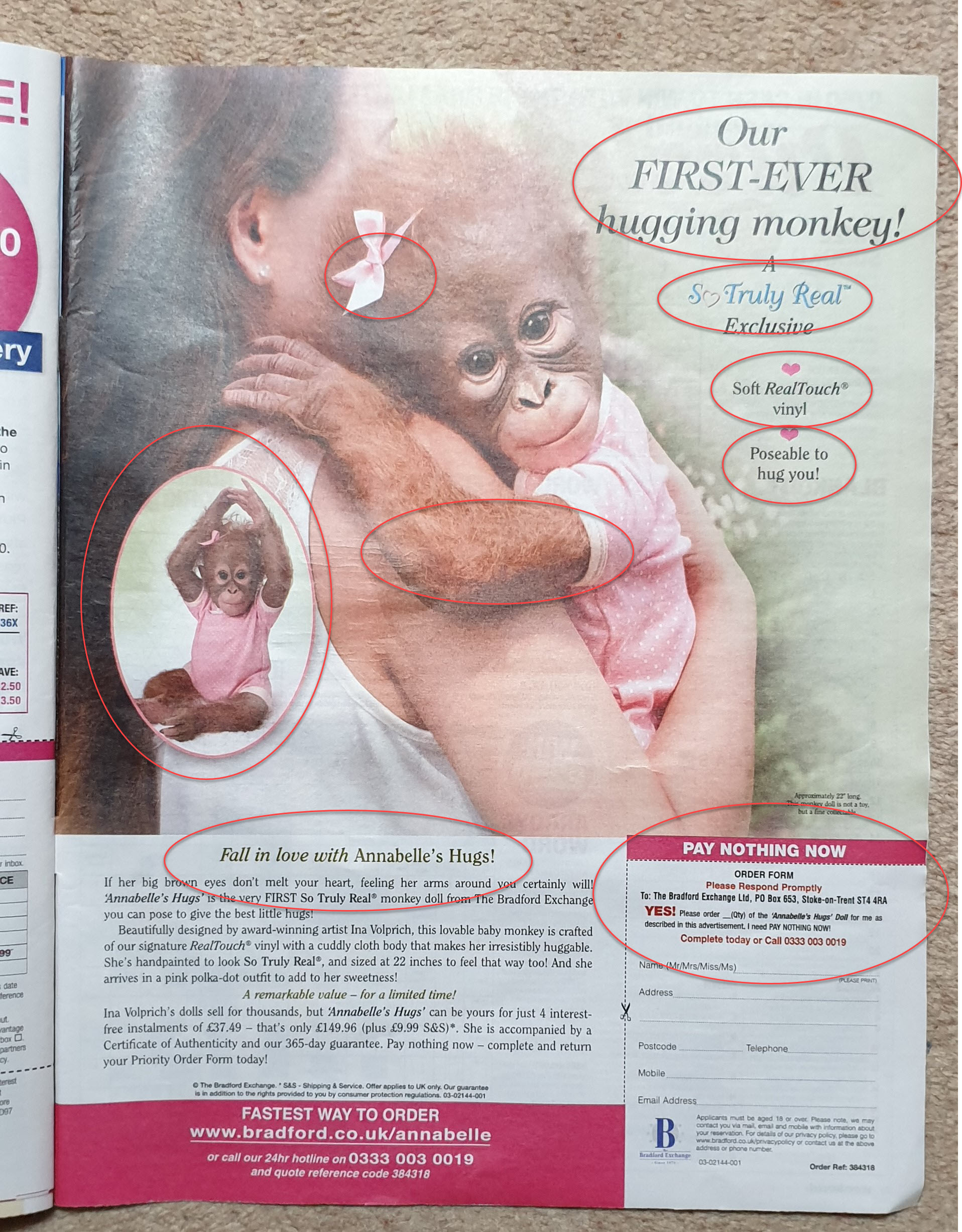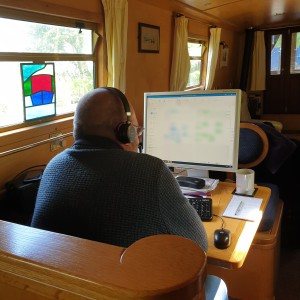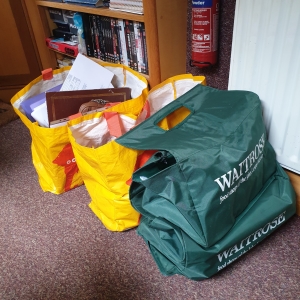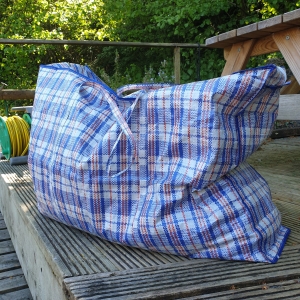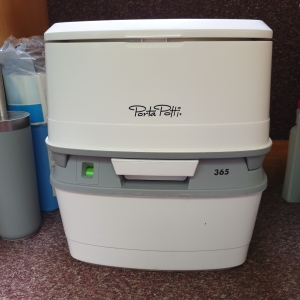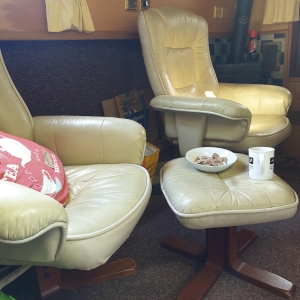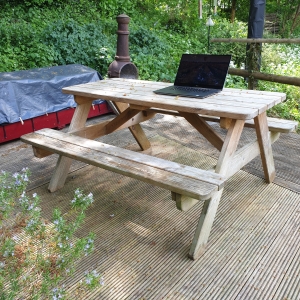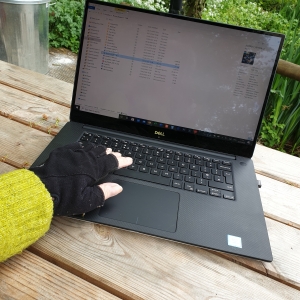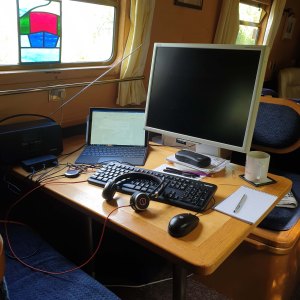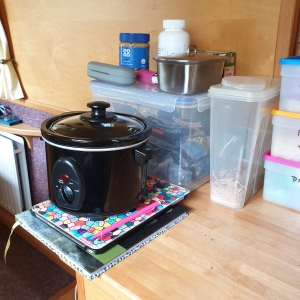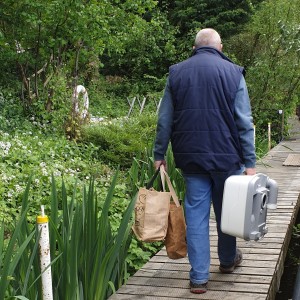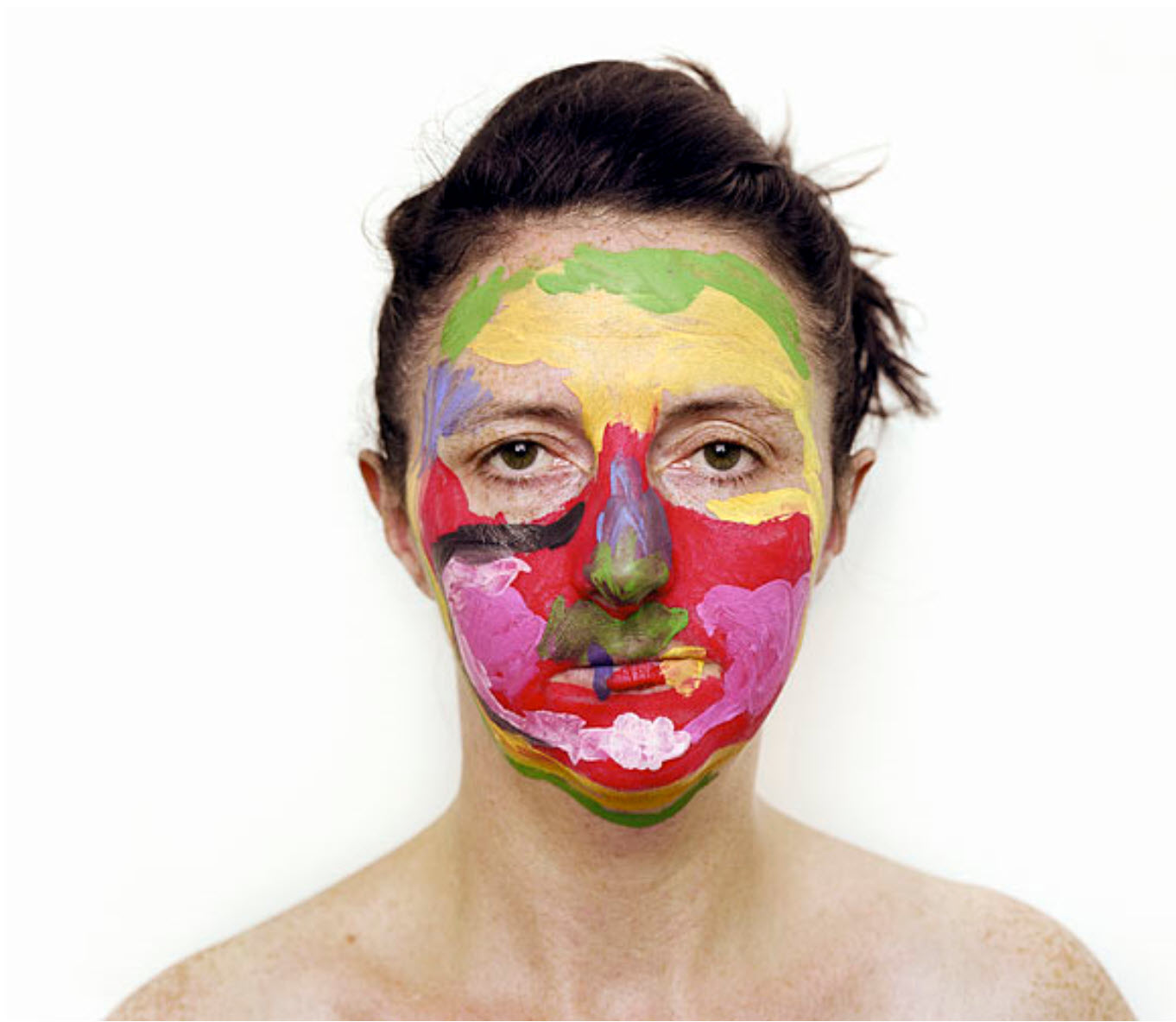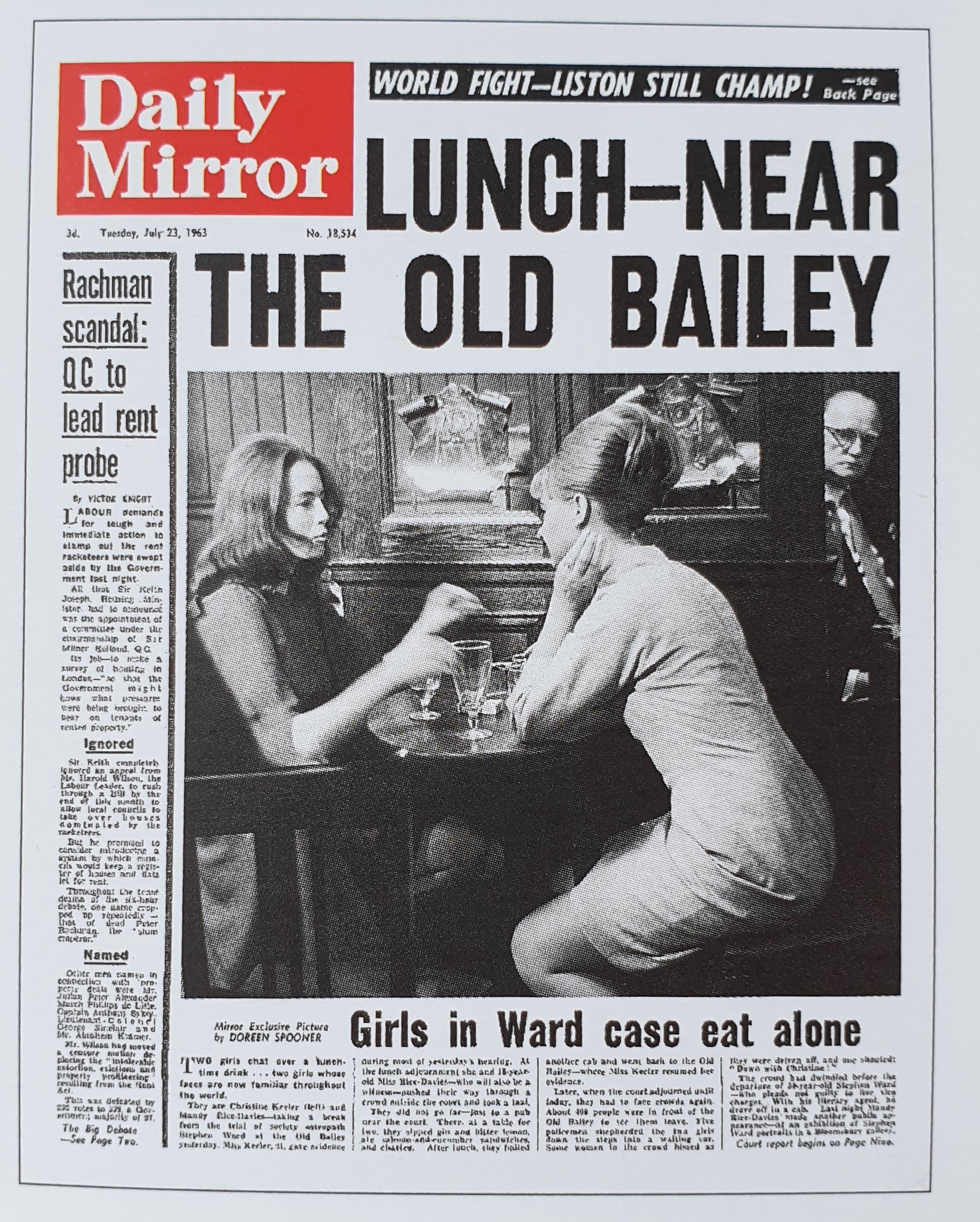
I first came across this photograph when reading the autobiography of Doreen Spooner, the first female Fleet Street photographer. I was fascinated by her story, how she achieved the status she did in an all-male environment, and finally how she managed to capture this image, incurring the envy of the male photographers and the jealousy of her husband, also a photographer. This turned out to be one of the main contributory factors causing the failure of her marriage.
He came into the kitchen with a ghost-white face, the newspaper hanging limply in his hand. He tossed it onto the breakfast table. “How the hell did you manage that?” he asked. … My picture of Christine Keeler and Mandy Rice-Davies stared up at me amid the tea cups and the toast rack.
(Spooner 2017:105)
I decided to revisit this photograph for the assignment and analyse it in a structured way drawing on the theories of Roland Barthes. I wanted to understand why it had attained such notoriety and had been published on the front page of the Daily Mirror. It turned out that the context of this photograph has two different threads associated with it: the story of the girls and their connection to the trial of Stephen Ward, and the story of the photographer Doreen Spooner and how she succeeded in taking this photograph. The photograph was published on Tuesday 23 July 1963, and I included the accompanying headlines in my image above because those words also give meaning to the photograph. In 2016 an article was written by Rachel Bletchly summarizing the career of Doreen Spooner at the Daily Mirror and this included details of how the photograph was taken.
Peering round the doorway from a ladies toilet in a London pub, Doreen Spooner’s heart raced as she raised her camera.
Adjusting for the dim, smoke-filled bar, she focused on two women locked in conversation then pressed the shutter… click, click, click.
The landlord heard it – her cover was blown – but she deftly removed the film and hid it in her coat before she was thrown out.
(Daily Mirror On-Line 8 October 2016)
Denotation and Connotation
Barthes, in analyzing a image uses the terms denotation and connotation. Denotation refers to the translation of what is there in the image. Connotation refers to the interpretation of the content, the background, and context of the items in image.
In Rhetoric of the Image, Barthes deconstructs an image of an advertisement for Panzini products, by using the concepts denotation and the connotations of the image, and also the concepts anchorage and relay text. (Barthes 1977: p33).
Using this analogy the denotation of Spooner’s image consist of two young fashionably well dressed women: Mandy Rice-Davies (on the right) and Christine Keeler (on the left) having lunch in a pub near the Old Bailey where the trial of Stephen Ward was taking place. They are seated in a corner of a surrounded by wood paneling. On the wall are plaques bearing coats of arms, giving the feeling of actually sitting in the Old Bailey, the dark wood paneling being similar to that of a courtroom. The two women are sitting leaning in towards each other deep in conversation. Finally, a man can be seen a short distance to the right of the two women looking straight at the camera.
I started to consider the connotations: why were the girls sitting in a corner, why were they deep in conversation, where was the pub located, why was the photograph so significant it appeared on the front page of the Daily Mirror? Was the man in the image the landlord who heard the camera click when Spooner took the photograph. I set out to research more about the context of this image.
The two girls were having lunch during a break of the trial of Stephen Ward who had been accused of procuring and allegedly living off the immoral earnings of women he had introduced to various high profile men. It turned out that one of these men was John Profumo, the then Secretary of State for War in Harold Macmillan’s government. Profumo had an affair with Christine Keeler, a fact which he initially denied, but subsequently admitted to, and all this set in train a series of events which help bring down the government later that year. Keeler maintained that she did not receive any payments during their relationship and was a key witness at Stephen Ward’s trial. However, later she was tried for perjury as she had given evidence at a previous trial involving an ex-boyfriend which conflicted with the evidence she gave at the Stephen Ward trial. (Pringle, R. W. 2015).
Doreen Spooner knew these two women she had seen in the corner next to the Ladies Toilets and the importance of Keeler’s evidence in the trial. She managed to get her photograph by hiding behind the toilet door without being seen. As she said in her biography, a man would not have been in a position to take this photograph.
Linguistic message
Barthes introduces two terms to describe text which accompanies an image: anchorage or relay. (Barthes 1977: 38)
Anchorage applies to any text where the author wishes to direct the viewer in a particular direction, and relay applies to any text which may be interpreted in different ways depending on the viewer, their background, culture, experience etc. Relay text supports the image rather than anchorage text which controls the image.
Newspaper headlines are usually written to direct the viewer, to catch a reader’s attention. The image is on the front page of the Daily Mirror but on its own is just two women sitting in a pub. It is the main headline “LUNCH – NEAR THE OLD BAILEY” which will jump out at people from the news stands. It will sell papers. This is anchorage text. The sub heading: “Girls in Ward case eat alone” has less importance and the viewer can put their own interpretation on those words. In fact the images shows they are not eating alone, there is another person in the image. This, using Barthes’ analogy, is relay text.
Conclusion
The stories behind this simple photograph of two young women changed the lives of many individuals.
On the one hand the trial was about alleged prostitution, corruption and risks to the security of the nation, all of which contributed to the resignation of the Prime Minister and the subsequent fall of the Conservative government. On the other hand the photographer was working in a male dominated profession, fighting to be respected by her male peers and fighting, and failing, to save her marriage.
Using Barthes’ concepts helped me separate the facts as shown in the image, along with the anchorage text, and the connotations surrounding the subjects of the image. I had answers to my original questions: why were these two young women sitting in deep conversation in a pub, where was the pub located, why was the photograph taken and why was it so important that it appeared on the front page of a national newspaper?
Illustration
Fig 1. Spooner, D (1963) Christine Keeler and Mandy Rice Davies. [Photograph] In : Spooner, D. and Clark, A. (2017) Camera Girl. London: Mirror Books. p.192.
Bibliography
Barthes, R. (1977) ‘Rhetoric of the Image (1964)’ In: Heath, S. (ed.) Image Music Text. London: Harper Collins. pp.32–51.
Bletchly, R. (2016) Britain’s first female photographer broke story of the century – for The Mirror. At: http://www.mirror.co.uk/news/uk-news/britains-first-female-photographer-broke-9006039 (Accessed 09/07/2020).
Pringle, R. W. (2015) ‘Profumo affair’ definition. [online] In: Encyclopædia Britannica. Encyclopædia Britannica, inc. At: https://www.britannica.com/event/Profumo-affair. (Accessed 13/07/2020)
Spooner, D. and Clark, A. (2017) Camera Girl. London: Mirror Books.


